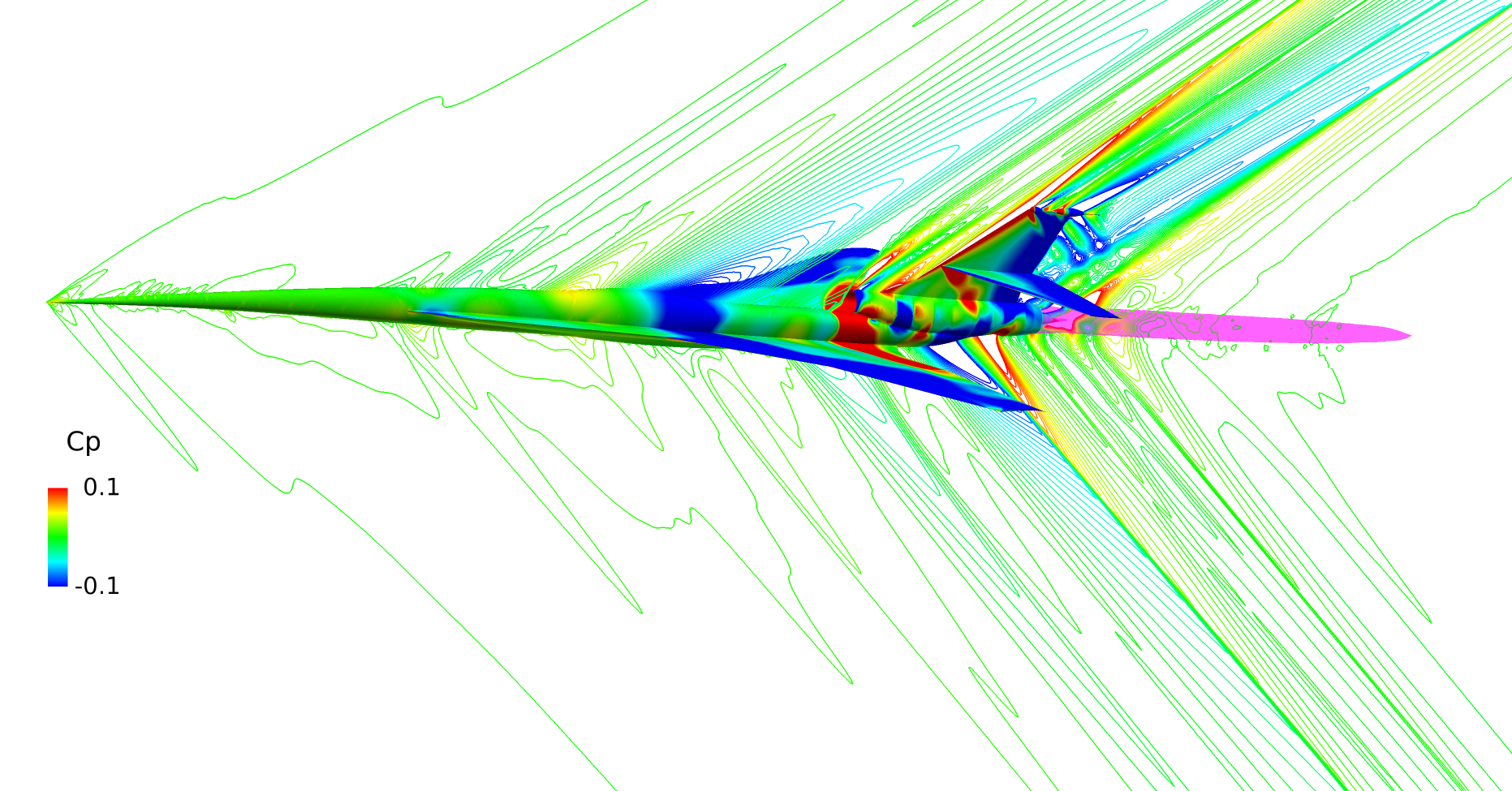Basic research for system integration of silent supersonic airplane technologies
JAXA Supercomputer System Annual Report April 2016-March 2017
Report Number: R16E0100
- Responsible Representative: Yoshikazu Makino(Next Generation Aeronautical Innovation Hub Center, Aeronautical Technology Directorate)
- Contact Information: Yoshikazu Makino(makino@chofu.jaxa.jp)
- Members: Yuki Kishi, Shinya Kitazaki, Jun Yamamoto, Go Iwamoto, Masahiro Kanazaki, Yoshikazu Makino, Hiroaki Fujiwara, Hideyuki Obata, Yohei Kasuga, Masaya Miyazaki
- Subject Category: Aviation(Aircraft)
Abstract
The system integration design technologies for achieving low sonic-boom, low aerodynamic drag, low landing and take-off noise, and light weight simultaneously are the key technologies for future supersonic airplanes. JAXA is promoting the R&D for these technologies based on our experiences of demonstrating the advanced low-drag and low-boom design concepts
Goal
Please refer ‘D-SEND project / Silent supersonic transport technology | Sky Frontier – Sky Frontier Program | Aeronautical Technology Directorate‘.
Objective
Please refer ‘D-SEND project / Silent supersonic transport technology | Sky Frontier – Sky Frontier Program | Aeronautical Technology Directorate‘.
References and Links
Please refer ‘D-SEND project / Silent supersonic transport technology | Sky Frontier – Sky Frontier Program | Aeronautical Technology Directorate‘.
Use of the Supercomputer
In the R&D for system integration of silent supersonic airplane technologies, the airplane design study of a small-size civil supersonic transport is conducted. Simulations for evaluating the aerodynamic performance and noise characteristics are conducted using JAXA supercomputer system.
Necessity of the Supercomputer
To achieve low sonic-boom, low aerodynamic drag, low landing and take-off noise, and light weight simultaneously, the multi-objective optimization tools are utilized in the design study. The super computer is necessary to obtain the multiple objective function efficiently with many numerical simulations.
Achievements of the Year
The effects of the exhaust of a jet engine on the sonic-boom pressure signatures for NASA’s supersonic low-boom demonstrator which is used as a test case in the 2nd international sonic-boom prediction workshop held in January, 2017 are estimated with JAXA’s CFD tool.
Publications
Presentation
1) Kasuga, Y., Yoshida, K., Ishikawa, H., ‘Wing Planform Optimization Method for Low-Boom and Low-Drag Aircraft.,’ 55th AIAA Aerospace Sciences Meeting, AIAA 2017-0039, 2017.
Computational Information
- Parallelization Methods: Hybrid Parallelization
- Process Parallelization Methods: MPI
- Thread Parallelization Methods: Automatic Parallelization
- Number of Processes: 24
- Number of Threads per Process: 12
- Number of Nodes Used: 2
- Elapsed Time per Case (Hours): 12
- Number of Cases: 51
Resources Used
Total Amount of Virtual Cost(Yen): 4,075,694
Breakdown List by Resources
| System Name | Amount of Core Time(core x hours) | Virtual Cost(Yen) |
|---|---|---|
| SORA-MA | 1,346,374.20 | 2,199,927 |
| SORA-PP | 43,361.21 | 370,218 |
| SORA-LM | 501.63 | 11,287 |
| SORA-TPP | 0.00 | 0 |
| File System Name | Storage assigned(GiB) | Virtual Cost(Yen) |
|---|---|---|
| /home | 3,007.15 | 28,366 |
| /data | 116,467.03 | 1,098,637 |
| /ltmp | 25,390.64 | 239,510 |
| Archiving System Name | Storage used(TiB) | Virtual Cost(Yen) |
|---|---|---|
| J-SPACE | 41.38 | 127,747 |
Note: Virtual Cost=amount of cost, using the unit price list of JAXA Facility Utilization program(2016)
JAXA Supercomputer System Annual Report April 2016-March 2017



